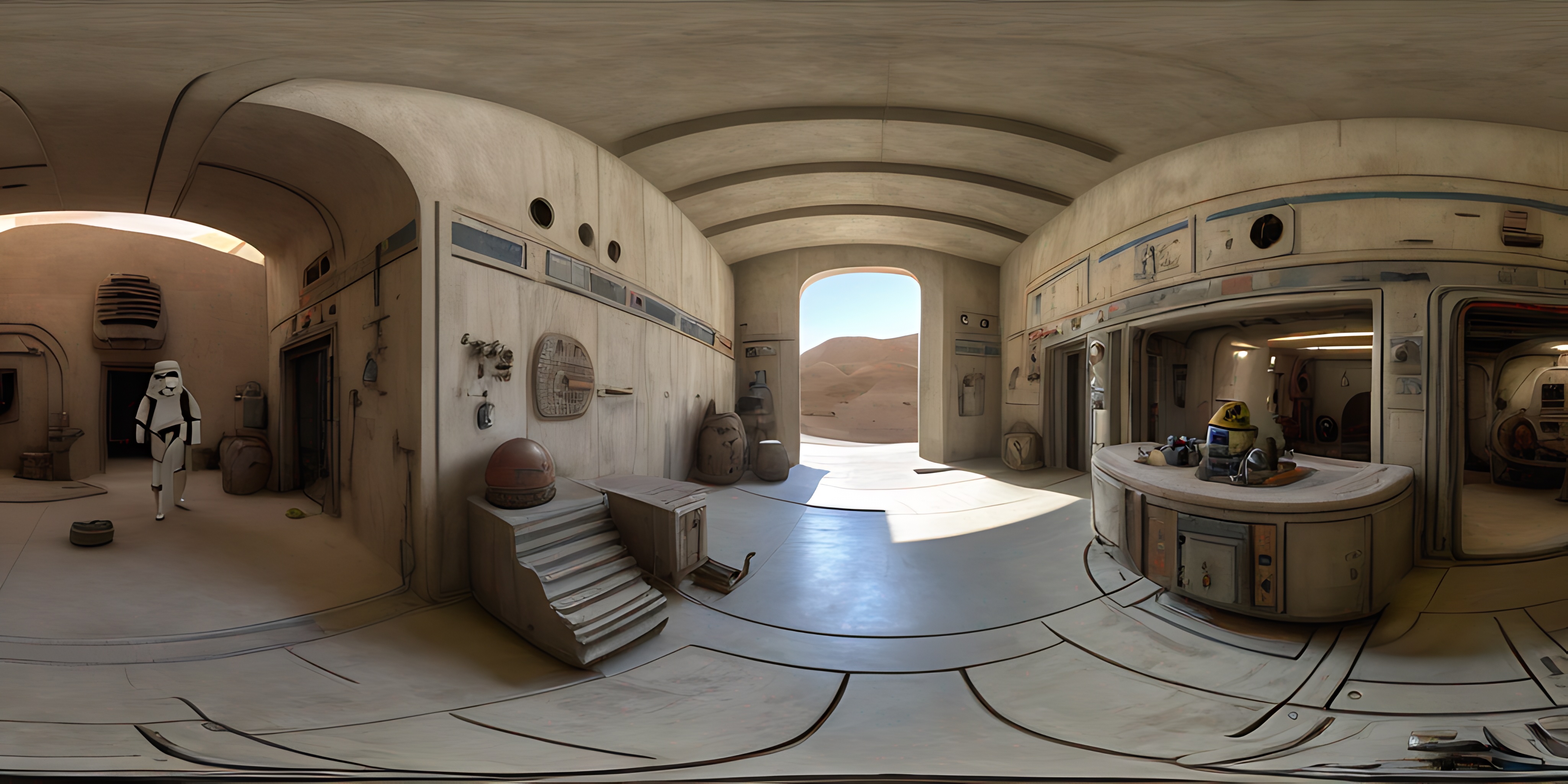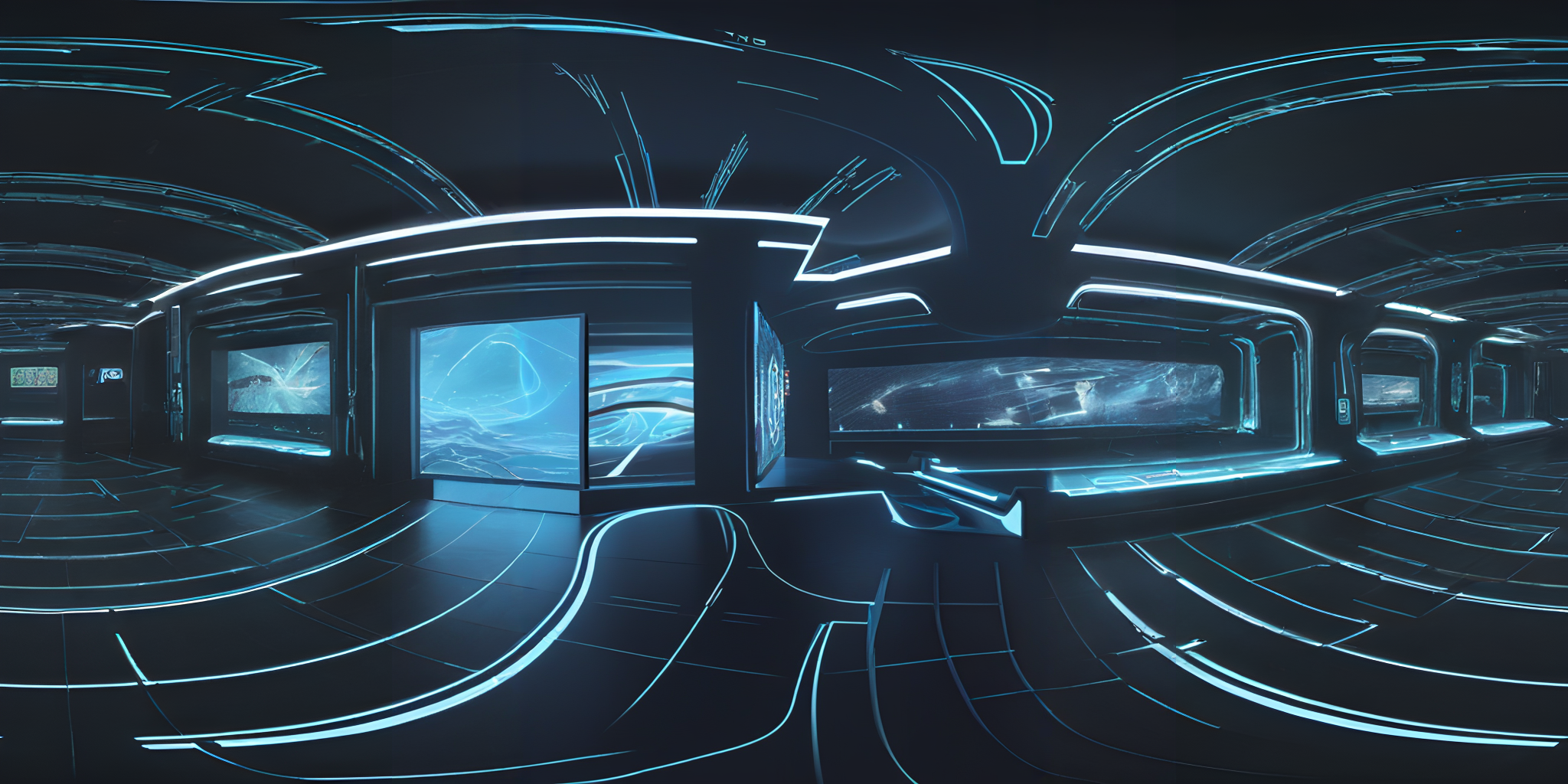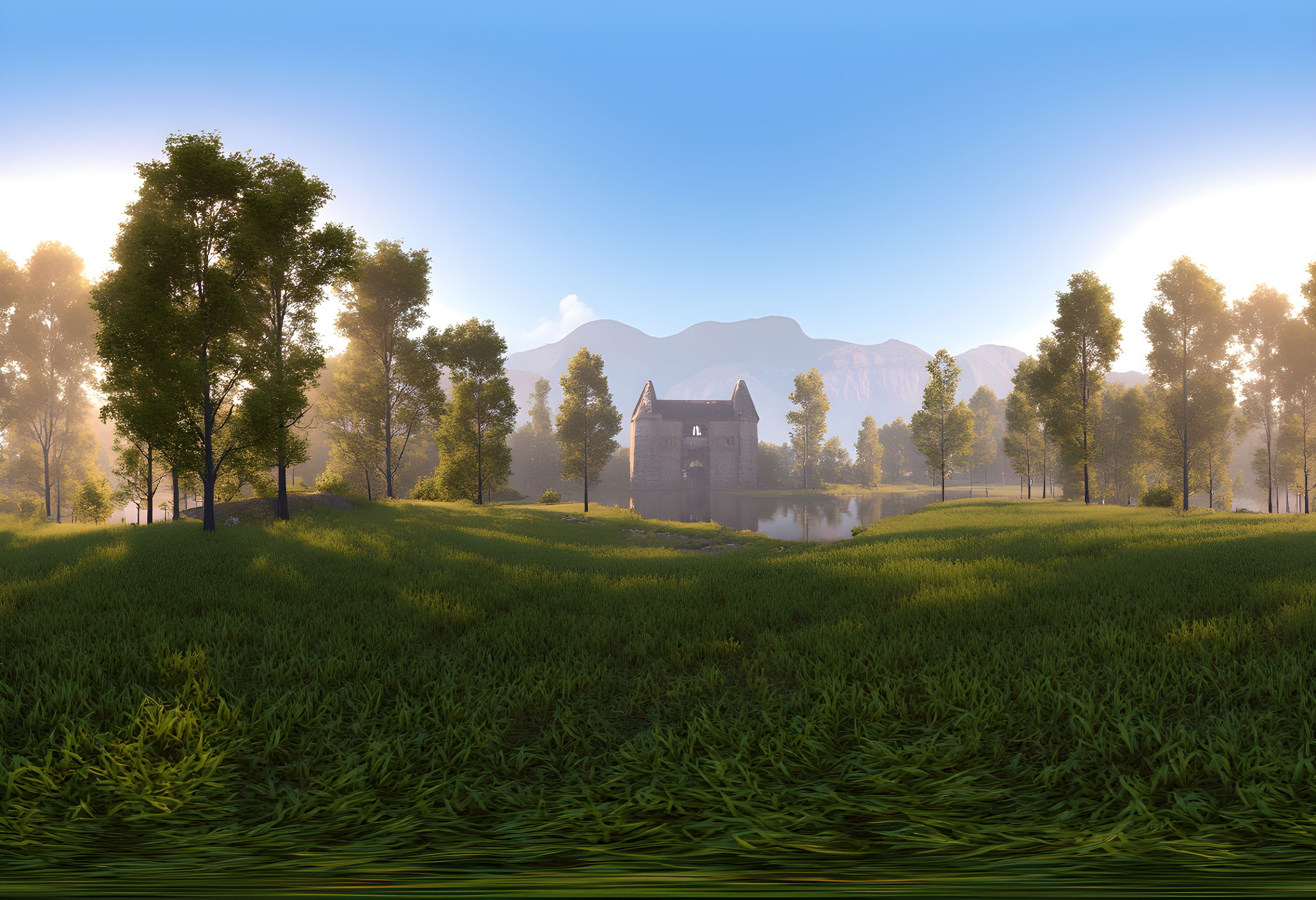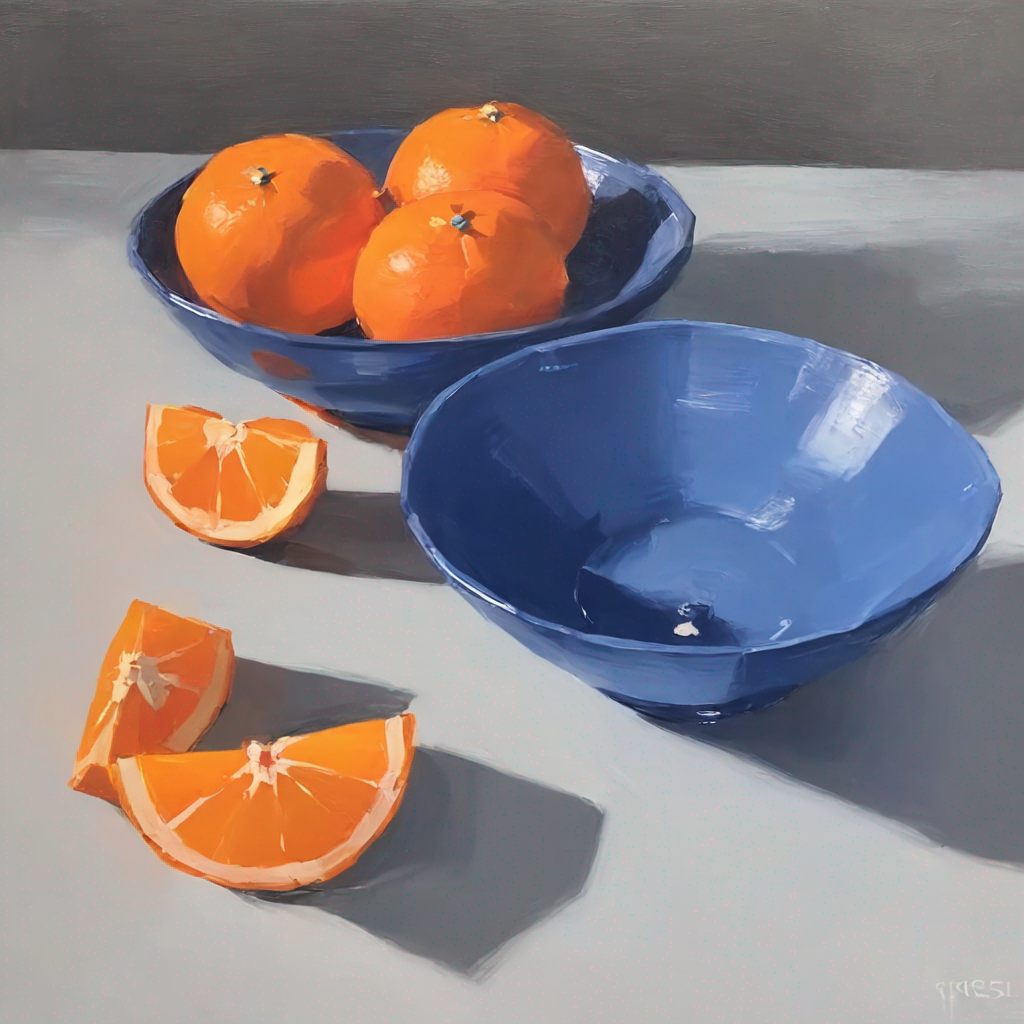sdxl-panorama
Maintainer: jbilcke

1

| Property | Value |
|---|---|
| Run this model | Run on Replicate |
| API spec | View on Replicate |
| Github link | No Github link provided |
| Paper link | No paper link provided |
Create account to get full access
Model overview
The sdxl-panorama model is a version of the Stable Diffusion XL (SDXL) model that has been fine-tuned for panoramic image generation. This model builds on the capabilities of similar SDXL-based models, such as sdxl-recur, sdxl-controlnet-lora, sdxl-outpainting-lora, sdxl-black-light, and sdxl-deep-down, each of which focuses on a specific aspect of image generation.
Model inputs and outputs
The sdxl-panorama model takes a variety of inputs, including a prompt, image, seed, and various parameters to control the output. It generates panoramic images based on the provided input.
Inputs
- Prompt: The text prompt that describes the desired image.
- Image: An input image for img2img or inpaint mode.
- Mask: An input mask for inpaint mode, where black areas will be preserved and white areas will be inpainted.
- Seed: A random seed to control the output.
- Width and Height: The desired dimensions of the output image.
- Refine: The refine style to use.
- Scheduler: The scheduler to use for the diffusion process.
- LoRA Scale: The LoRA additive scale, which is only applicable on trained models.
- Num Outputs: The number of images to output.
- Refine Steps: The number of steps to refine, which defaults to
num_inference_steps. - Guidance Scale: The scale for classifier-free guidance.
- Apply Watermark: A boolean to determine whether to apply a watermark to the output image.
- High Noise Frac: The fraction of noise to use for the expert_ensemble_refiner.
- Negative Prompt: An optional negative prompt to guide the image generation.
- Prompt Strength: The prompt strength when using img2img or inpaint mode.
- Num Inference Steps: The number of denoising steps to perform.
Outputs
- Output Images: The generated panoramic images.
Capabilities
The sdxl-panorama model is capable of generating high-quality panoramic images based on the provided inputs. It can produce detailed and visually striking landscapes, cityscapes, and other panoramic scenes. The model can also be used for image inpainting and manipulation, allowing users to refine and enhance existing images.
What can I use it for?
The sdxl-panorama model can be useful for a variety of applications, such as creating panoramic images for virtual tours, film and video production, architectural visualization, and landscape photography. The model's ability to generate and manipulate panoramic images can be particularly valuable for businesses and creators looking to showcase their products, services, or artistic visions in an immersive and engaging way.
Things to try
One interesting aspect of the sdxl-panorama model is its ability to generate seamless and coherent panoramic images from a variety of input prompts and images. You could try experimenting with different types of scenes, architectural styles, or natural landscapes to see how the model handles the challenges of panoramic image generation. Additionally, you could explore the model's inpainting capabilities by providing partial images or masked areas and observing how it fills in the missing details.
This summary was produced with help from an AI and may contain inaccuracies - check out the links to read the original source documents!
Related Models

sdxl-panoramic

6
The sdxl-panoramic is a custom AI model developed by Replicate that generates seamless 360-degree panoramic images. It builds upon Replicate's previous work on the sdxl, sdxl-inpainting, and sdxl-niji-se models, incorporating techniques like GFPGAN upscaling and image inpainting to create a high-quality, panoramic output. Model inputs and outputs The sdxl-panoramic model takes a text prompt as its input, and generates a 360-degree panoramic image as output. The input prompt can describe the desired scene or content, and the model will generate an image that matches the prompt. Inputs Prompt**: A text description of the desired panoramic image. Seed**: An optional integer value to control the random number generator and produce consistent outputs. Outputs Image**: A seamless 360-degree panoramic image, generated based on the input prompt. Capabilities The sdxl-panoramic model is capable of generating a wide variety of panoramic scenes, from futuristic cityscapes to fantastical landscapes. It can handle complex prompts and produce highly detailed, immersive images. The model's ability to seamlessly stitch together the panoramic output is a key feature that sets it apart from other text-to-image models. What can I use it for? The sdxl-panoramic model could be used to create visually stunning backgrounds or environments for various applications, such as virtual reality experiences, video game environments, or architectural visualizations. Its panoramic output could also be used in marketing, advertising, or social media content to capture a sense of scale and immersion. Things to try Try experimenting with different prompts that describe expansive, panoramic scenes, such as "a sprawling cyberpunk city at night" or "a lush, alien world with towering mountains and flowing rivers." The model's ability to handle complex, detailed prompts and produce cohesive, 360-degree images is a key strength to explore.
Updated Invalid Date

flux-360

4
The flux-360 model is a powerful tool for generating 360-degree panoramic images. It builds upon the capabilities of the Stable Diffusion model, with additional fine-tuning and customization by the maintainer igorriti. While similar models like sdxl-panorama, sdxl-panoramic, and flux_img2img also focus on panoramic and image-to-image tasks, the flux-360 model offers unique features and capabilities. Model inputs and outputs The flux-360 model takes a variety of inputs, including an image, a prompt, and various settings to control the generation process. The model can generate 360-degree panoramic images, with the ability to specify the aspect ratio, resolution, and number of output images. Inputs Prompt**: A text description of the desired image content. Image**: An input image that can be used for inpainting or image-to-image tasks. Mask**: A mask image that specifies areas to be preserved or inpainted. Seed**: A random seed value for reproducible generation. Model**: The specific model to use for the generation, with options for a "dev" or "schnell" version. Width and Height**: The desired dimensions of the generated image, if using a custom aspect ratio. Aspect Ratio**: The aspect ratio for the generated image, with options like 1:1, 16:9, or custom. Num Outputs**: The number of images to generate. Guidance Scale**: The strength of the text-to-image guidance during the diffusion process. Prompt Strength**: The strength of the prompt when using image-to-image or inpainting modes. Num Inference Steps**: The number of steps to take during the diffusion process. Outputs Generated Images**: The 360-degree panoramic images produced by the model, in the specified format (e.g., WEBP). Capabilities The flux-360 model excels at generating high-quality 360-degree panoramic images from text prompts. It can produce immersive, realistic-looking panoramas that capture a wide range of scenes and environments. The model's ability to fine-tune with additional LoRA models, like the flux-cinestill model, further enhances its versatility and creative potential. What can I use it for? The flux-360 model can be a valuable tool for a variety of applications, such as virtual tourism, real estate, and video production. By generating visually stunning 360-degree panoramas, users can create immersive experiences, virtual tours, or even background assets for creative projects. The model's flexibility in terms of aspect ratio and resolution also makes it suitable for a wide range of use cases, from social media posts to high-quality virtual experiences. Things to try Experiment with different prompts and settings to explore the range of possibilities offered by the flux-360 model. Try combining it with other LoRA models, such as sdxl-lightning-4step, to achieve unique visual styles or faster generation times. Additionally, explore the model's image-to-image and inpainting capabilities to refine or manipulate existing images into stunning 360-degree panoramas.
Updated Invalid Date

sdxl-allaprima

3
The sdxl-allaprima model, created by Dorian Darko, is a Stable Diffusion XL (SDXL) model trained on a blocky oil painting and still life dataset. This model shares similarities with other SDXL models like sdxl-inpainting, sdxl-bladerunner2049, and sdxl-deep-down, which have been fine-tuned on specific datasets to enhance their capabilities in areas like inpainting, sci-fi imagery, and underwater scenes. Model inputs and outputs The sdxl-allaprima model accepts a variety of inputs, including an input image, a prompt, and optional parameters like seed, width, height, and guidance scale. The output is an array of generated images that match the input prompt and image. Inputs Prompt**: The text prompt that describes the desired image. Image**: An input image that the model can use as a starting point for generation or inpainting. Mask**: A mask that specifies which areas of the input image should be preserved or inpainted. Seed**: A random seed value that can be used to generate reproducible outputs. Width/Height**: The desired dimensions of the output image. Guidance Scale**: A parameter that controls the influence of the text prompt on the generated image. Outputs Generated Images**: An array of one or more images that match the input prompt and image. Capabilities The sdxl-allaprima model is capable of generating high-quality, artistic images based on a text prompt. It can also be used for inpainting, where the model fills in missing or damaged areas of an input image. The model's training on a dataset of blocky oil paintings and still lifes gives it the ability to generate visually striking and unique images in this style. What can I use it for? The sdxl-allaprima model could be useful for a variety of applications, such as: Creating unique digital artwork and illustrations for personal or commercial use Generating concept art and visual references for creative projects Enhancing or repairing damaged or incomplete images through inpainting Experimenting with different artistic styles and techniques in a generative AI framework Things to try One interesting aspect of the sdxl-allaprima model is its ability to generate images with a distinctive blocky, oil painting-inspired style. Users could experiment with prompts that play to this strength, such as prompts that describe abstract, surreal, or impressionistic scenes. Additionally, the model's inpainting capabilities could be explored by providing it with partially complete images and seeing how it fills in the missing details.
Updated Invalid Date

sdxl-lightning-4step

453.2K
sdxl-lightning-4step is a fast text-to-image model developed by ByteDance that can generate high-quality images in just 4 steps. It is similar to other fast diffusion models like AnimateDiff-Lightning and Instant-ID MultiControlNet, which also aim to speed up the image generation process. Unlike the original Stable Diffusion model, these fast models sacrifice some flexibility and control to achieve faster generation times. Model inputs and outputs The sdxl-lightning-4step model takes in a text prompt and various parameters to control the output image, such as the width, height, number of images, and guidance scale. The model can output up to 4 images at a time, with a recommended image size of 1024x1024 or 1280x1280 pixels. Inputs Prompt**: The text prompt describing the desired image Negative prompt**: A prompt that describes what the model should not generate Width**: The width of the output image Height**: The height of the output image Num outputs**: The number of images to generate (up to 4) Scheduler**: The algorithm used to sample the latent space Guidance scale**: The scale for classifier-free guidance, which controls the trade-off between fidelity to the prompt and sample diversity Num inference steps**: The number of denoising steps, with 4 recommended for best results Seed**: A random seed to control the output image Outputs Image(s)**: One or more images generated based on the input prompt and parameters Capabilities The sdxl-lightning-4step model is capable of generating a wide variety of images based on text prompts, from realistic scenes to imaginative and creative compositions. The model's 4-step generation process allows it to produce high-quality results quickly, making it suitable for applications that require fast image generation. What can I use it for? The sdxl-lightning-4step model could be useful for applications that need to generate images in real-time, such as video game asset generation, interactive storytelling, or augmented reality experiences. Businesses could also use the model to quickly generate product visualization, marketing imagery, or custom artwork based on client prompts. Creatives may find the model helpful for ideation, concept development, or rapid prototyping. Things to try One interesting thing to try with the sdxl-lightning-4step model is to experiment with the guidance scale parameter. By adjusting the guidance scale, you can control the balance between fidelity to the prompt and diversity of the output. Lower guidance scales may result in more unexpected and imaginative images, while higher scales will produce outputs that are closer to the specified prompt.
Updated Invalid Date